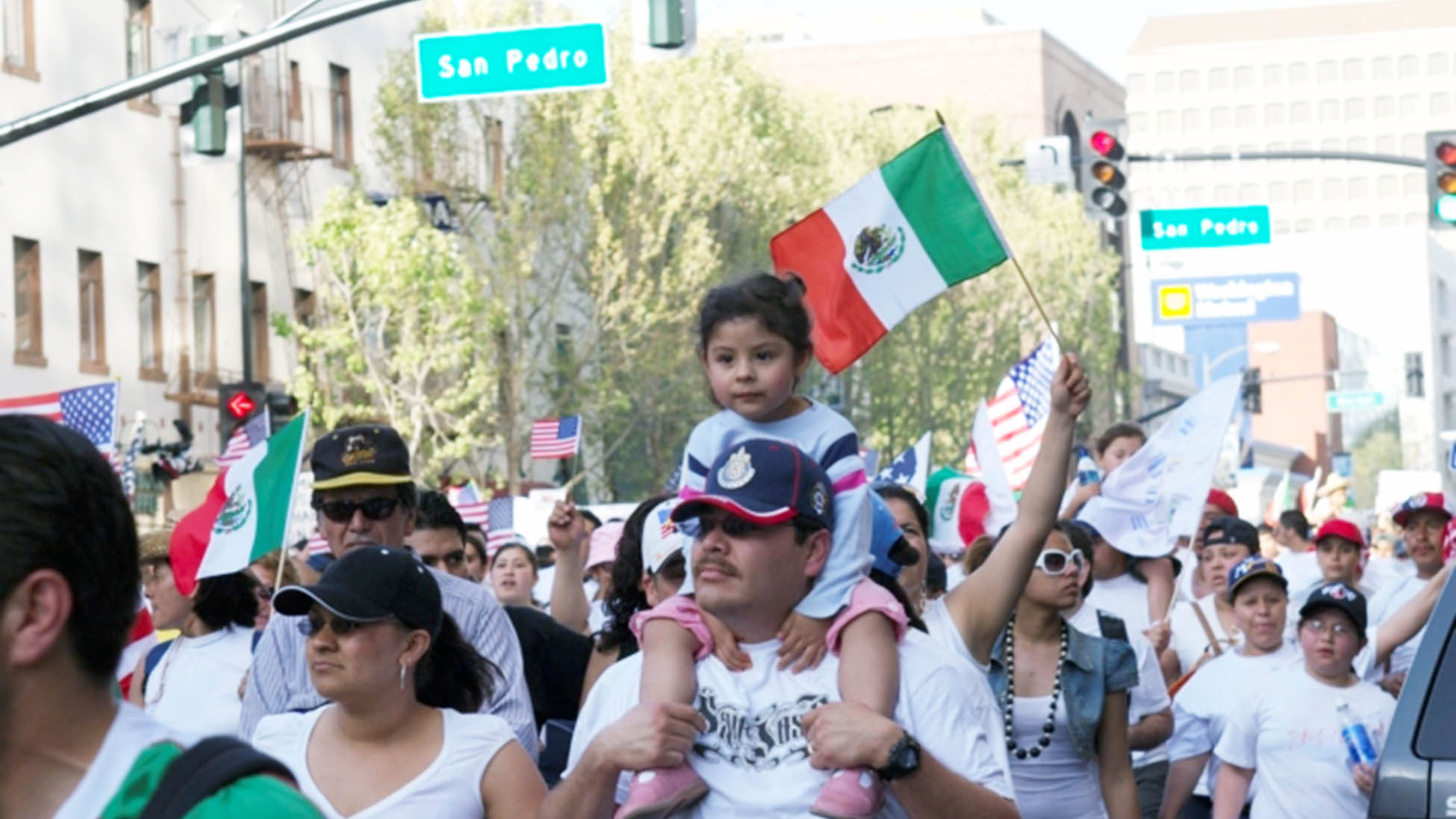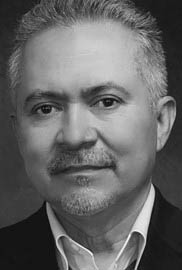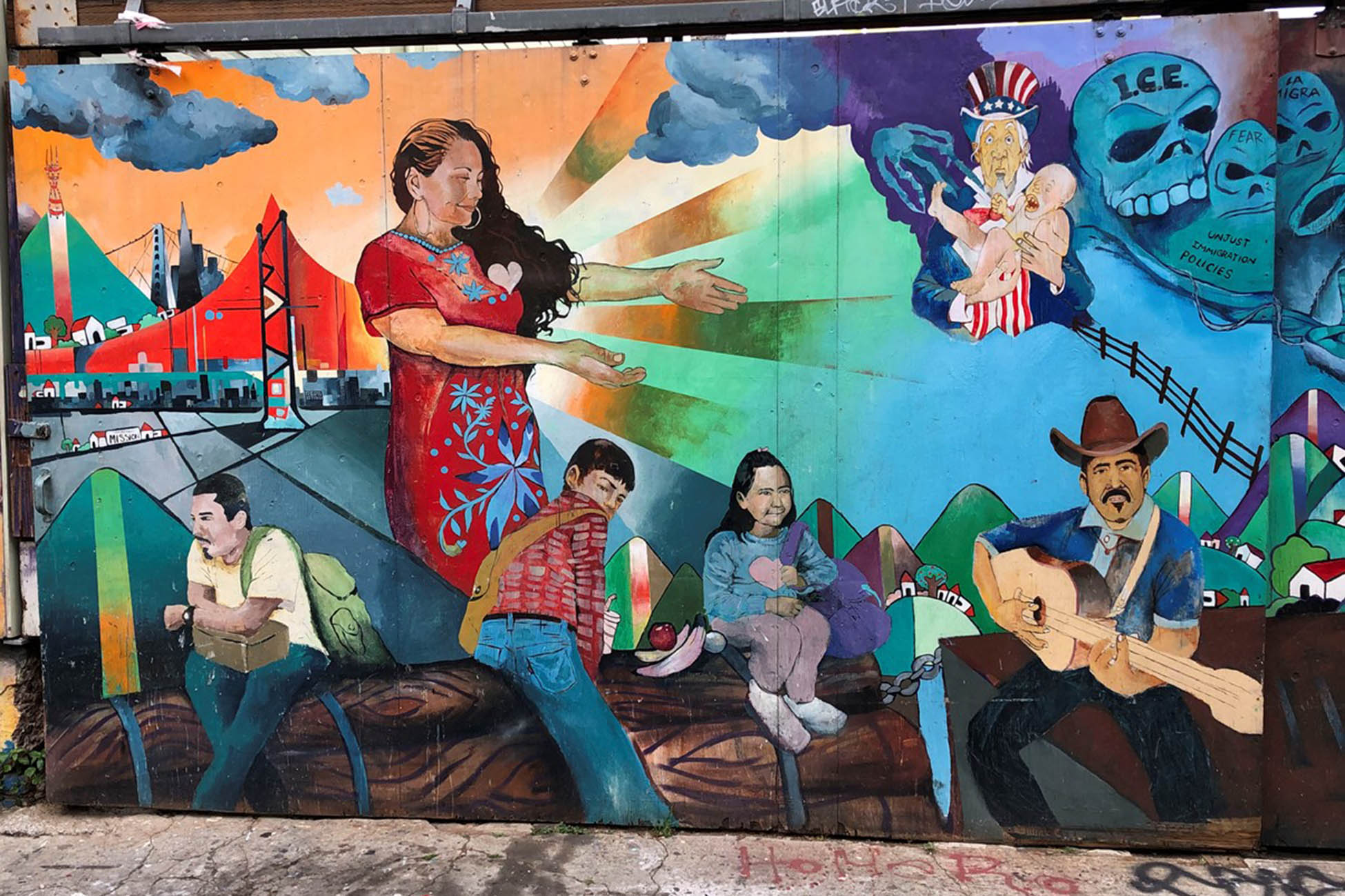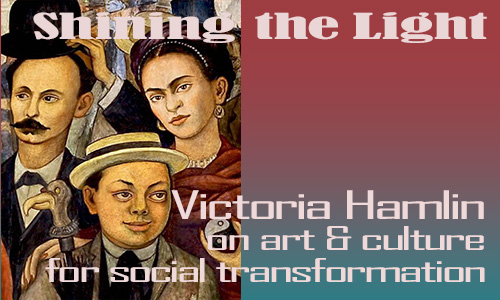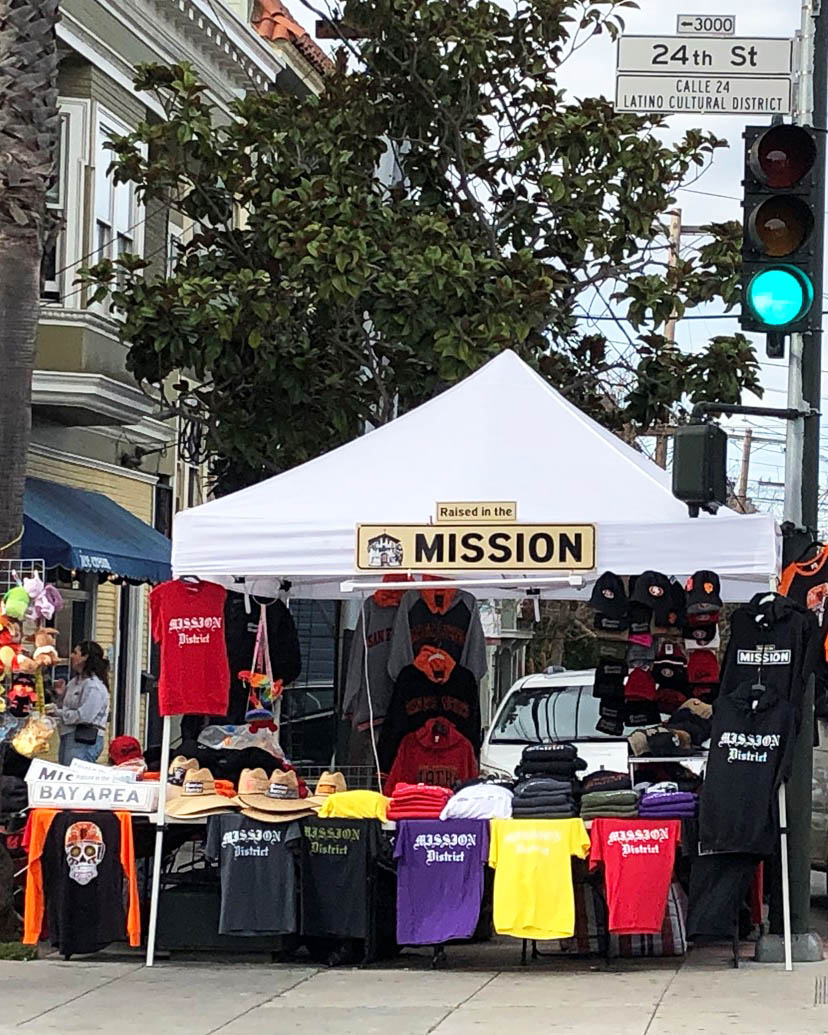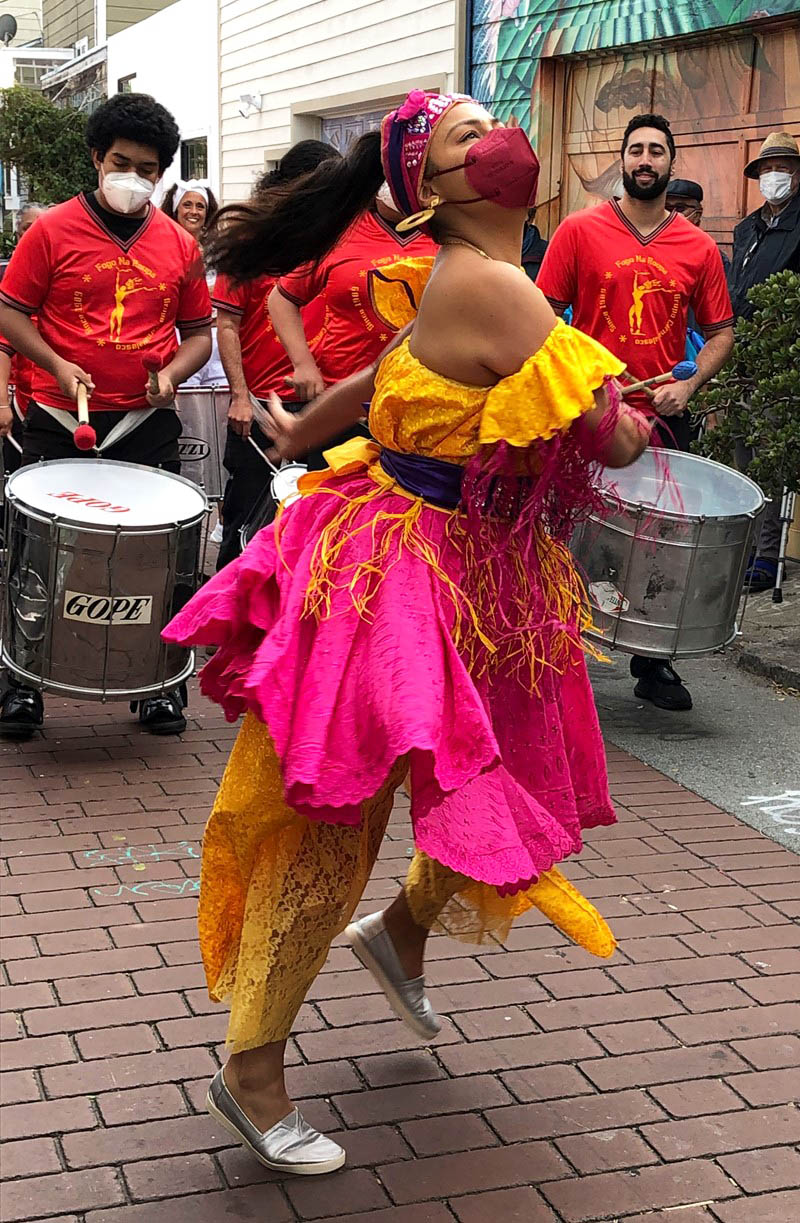|
|
|
|
The weekly newsletter of the México Solidarity Project |
|
|
|
March 30, 2022/ This week's issue/ Meizhu Lui, for the editorial team |
|
|
‘Transnational Consciousness’: The Two-in-One |
|
When my father died, he had lived in the United States for 80 years. But he still considered himself as much Chinese as American. But my father lived in a US where white political leaders have long expected — or forced — immigrants to choose between their two identities. You’re either “American” or you’re not. You’re either with us or against us.
This assimilationist mindset ends up white-washing those who come from somewhere else. Immigrant parents understand that you have to be fluent in English to be successful in school or get a job. So these parents, if they can, often try to keep their households “English only” to make life easier for their children. Speaking their own language in public, immigrant parents know full well, will get their family looked upon with suspicion.
For European immigrants, citizenship brings a ticket to all the benefits US society has to offer. For those from the global South, that ticket never comes. In their society’s eyes, they can never be quite good — or trustworthy — enough. One recent example: Chinese-American scientists having their lives destroyed by charges they’re spying for China.
This story does have one silver lining. The pressures on immigrants of color often leave them more likely to keep an identity with their home country, to want to know more about where they come from. The noted immigrant rights leader Oscar Chacón, our spotlight in this week’s Voices, has a name for this dynamic: “transnational consciousness.” Chacón himself has lived more of his life in the United States than in his native El Salvador.
Does a dual national identification mean you suffer from a split personality? Hardly. You may not feel completely comfortable in either nation, but you feel comfortable enough in both. And your realize that no just one “right” culture exists. With that realization, you can easily relate to people from cultures different from either of your own.
Some people see immigrant Americans as one person split in two. That perspective totally misses the richness of the immigrant experience. Immigrant lives actually meld two into one. Immigrants have the magical capacity to belong in more than one place. What better way to help heal the world! |
|
|
|
Don’t miss an issue. Subscribe to the weekly México Solidarity Bulletin! |
|
|
|
|
Organizing for Transformation, Wherever We May Be |
|
Oscar Chacón, a co-founder and executive director of the national Alianza Americas network, has been a long-time leader in human and immigrant rights organizations. He’s also served on advisory committees to national and international efforts like the World Social Forum on Migration. He’s been a frequent spokesperson on issues ranging from transnationalism and the link between migration and development to racism and U.S. Latino community issues.
You came to the US from El Salvador. What’s your migration story? |
|
|
I fled my country in 1980 at the age of 18. I was already doing political work against the right-wing government of El Salvador when a civil war erupted. I had to leave quickly because my life was in danger. I hastily chose the US as my destination because New York City already had a small Salvadoran community.
I came to the US without papers. But immigrants didn’t face any blatant persecution at that time. We could get jobs easily and live a near normal life. The police did stop me once. I was carrying a bag full of cash and checks to deposit for my employer. They saw a suspicious Latino man and ended up giving me a ticket for driving without a license. But they never asked about my immigration status. Soon after that I went to apply for a driver’s license and got one! And back then, anyone in need, regardless of status, could apply for and get public assistance.
That sounds like a fairy tale! When did things start to change?
In the mid-1980s, with the changing face of immigrants. Through 1970, most immigrants came from Europe. Mexicans made up merely 8 percent of the foreign-born population. By 1990, most immigrants, especially those without visas, had become Mexicans and Central Americans.
Anti-Mexican and Latin American policies took root during the Reagan administration of the 1980s. With even white Americans feeling the budget cuts of the Reagan years, it became politically convenient to blame Mexicans and other immigrants for the squeeze white families were feeling. This anti-Mexican crusade peaked in California. In 1994, Pete Wilson combined anti-Mexican sentiments, white supremacy, and nativism in his gubernatorial re-election campaign. That all worked for him.
Conservatives in California even managed to get a majority of voters to support Proposition 187, an initiative that denied public education to the children of undocumented Mexican parents. Prop 187 became the mother of all racist attacks on immigrants — and a springboard for a raft of federal anti-immigrant legislation.
Did those escalating attacks motivate you to serve immigrants?
No. Many Salvadoran exiles, including me, had our focus then on stopping US intervention in El Salvador. We stayed connected to the Salvadoran revolutionary movement.
But in 1992 the civil war in El Salvador ended. I thought about moving back. But I found that I no longer felt 100 percent at “home” in El Salvador. My focus began to shift toward issues facing immigrants in the US.
I also began to explore what it means to have “transnational consciousness” and decided that we needed to claim a space for those not limited to one national identity or the other. In 2004, consistent with that idea, I became a founder of Alianza Americas, a network that now includes some 55 Latinx organizations.
Are most of the 55 organizations Mexican?
Not exactly. The majority of organizations in Alianza Americas mainly serve Mexican immigrants. We do have many Mexicano groups, but even organizations originally founded in the 1980s to serve Central Americans now find themselves mainly serving Mexican immigrants. By 2000, for example, most of the people served by Centro Romero in Chicago, named after the archbishop of El Salvador killed in 1980, had become Mexicano.
The proliferation of Central American-led organizations we saw in the 1980s directly reflected the type of immigrants who were then coming to the US — namely politically educated people with organizing skills. Most Mexicans coming to the US don’t have the same experience of engaging in struggles to change their governments. Given the long reign of the PRI in México, many don’t understand the centrality of organizing in civil society. Rather than disputing power, they take a “go along to get along” approach.
Does Alianza America focus mainly on immigration reform?
No. Alianza’s mission, from the start, has focused on improving the quality of life for people in the US, as well as in our home countries. Our fight for immigrant rights became an unavoidable challenge brought to us by white supremacists and xenophobic forces. But we don’t see immigration policy reform as our ultimate end. We use the immigration policy arena to help people learn how to organize to gain political power in the US and in their home countries.
We’ve recently identified four pillars for our work. First, to achieve greater equality, particularly in terms of sustainable economic prosperity. Second, to re-imagine democracy, both as a form of governance and as a way of life. Third, to work as hard as we can to counter lies and promote narratives based on truth telling. Fourth and finally, to keep defending the rights of people still getting forced to migrate. In the end, we need to build organized social and political power and organize for economic, social, and political transformation, in whatever country we may be in. |
|
|
A Living Tribute to the Mission District’s Latinx Community |
|
|
There’s something special about 24th Street. I’ve felt that way ever since I first stepped on this street back in the 1970s. |
|
|
Between 1997 and 2014, this area experienced over 1,504 no-fault evictions in the Mission District. But the street’s energy and basic make-up have — so far! — been strong enough to survive the constant push toward San Francisco’s gentrification. |
|
Owners of stores and restaurants come and go, homes and apartments get facelifts as real estate values shoot through the roof, and old properties get “repurposed.” The demographics change as well. But the art and music of this cultural corridor still speak to the resilience and love in this community.
I felt all that resilience and love earlier this month at the Paseo Artístico, a bilingual community art stroll organized by Acción Latina and a coalition of 24th Street/Calle 24 cultural venues. The “culture walk” wove its way along 24th Street, and I stopped at major points along the way to talk to locals, visit historic and newly created murals, and move to the beat of the fabulous musicians and dancers. |
|
|
|
This year’s Paseo Artístico highlighted the vital importance of women to this oh so exciting and vibrant culture. The March 12 event, notes Fátima Ramirez of the El Tecolote newspaper, featured over 50 women artists and women-led music ensembles, including an all-female mariachi band.
Let’s hope and work for a long and happy life for the Mission District’s Latinx community! |
|
|
Recent news reports and commentaries, from progressive and mainstream media,
Bill Gallegos, México Takes on the the United States’ Gun Goliaths, The Nation. The Mexican government’s lawsuit against US gun manufacturers, if successful, could completely change the terrain in the fight to combat gun crime in both countries.
Amy Stillman, AMLO Declines to Make Concessions Over Mexican Electricity Bill, Bloomberg News. The controversial bill would boost the power of the state utility and weaken private operators.
México criticizes quick aid to Ukraine amid delays in investment to Central America, Reuters. López Obrador has long pressed the United States to invest more in Central America to help tackle the causes of migration.
John Ackerman, Sabotaje a la ratificación de López Obrador, La Jornada. Como si fuera un partido de oposición, el Instituto Nacional Electoral milita abiertamente en contra del Presidente de la República.
México’s López Obrador inaugurates new international airport, Al Jazeera. The new airport has been built for less than half the cost of his predecessor’s now-ended airport project, whose foundations are now sinking into what had once been a lakebed. |
|
|
The Mexico Solidarity Project brings together activists from various socialist and left organizations and individuals committed to worker and global justice who see the 2018 election of Andrés Manuel López Obrador as president of México as a watershed moment. AMLO and his progressive Morena party aim to end generations of corruption, impoverishment, and subservience to US interests. Our Project supports not just Morena, but all Mexicans struggling for basic rights, and opposes US efforts to undermine organizing and México’s national sovereignty.
Editorial committee: Meizhu Lui, Bruce Hobson, Bill Gallegos, Sam Pizzigati, Courtney Childs, Victoria Hamlin, Agatha Hinman. To give feedback or get involved, email us! |
|
|
|
Web page and application support for the México Solidarity Project from NOVA Web Development, a democratically run, worker-owned and operated cooperative focused on developing free software tools for progressive organizations. |

